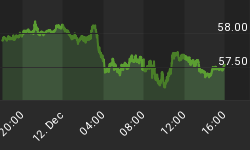The euro is rebounding from the trendline of the past six months and is now challenging the key resistance line at 1.3350. A move above 1.3410 can take the price to 1.36.
European economy is bottoming out
As expected, the European Central Bank (ECB) left interest rates unchanged on Thursday. President Draghi sees some improvement in the region's financial conditions. Lately, yields and spreads on sovereign and bank bonds have decreased. Capitals are returning to some troubled countries, while current account balances are shrinking. As opposed to December, this time ECB's decision was anonymous. Nonetheless, the ECB expects only a mild recovery this year, as confidence stays low and business activity is weak. As a result, ECB's "wait and see" approach should continue for some more time and will support the European currency over the coming months as well. EUR/USD is rebounding from the lower channel line of the past six months and is challenging the key resistance line at 1.3350. A move above 1.3410 would possibly take the price to 1.36. It is true that, in the past, the US dollar was strong against the euro currency until the end of May. Nonetheless, at times, counter-seasonal moves do happen. In addition, the medium-term trend is still bullish for the euro. History has in fact shown that the EUR/USD uptrend can expand 20%-30% from the low of 1.20 before topping. In addition, a divergence has occurred between the RSI indicator and the price on the daily chart, which should create an upside momentum over the short-medium term. A breakout failure would instead take EUR/USD to 1.3190 and eventually 1.3000.
Growth is the main goal in the US
In effect, the economic decline has probably bottomed out in Europe. After the good numbers from the Purchasing Managers' Index (PMI) survey, the composite indicator from the industrial and consumer surveys, published by the European Commission, rose for two consecutive months in November and December. The up-move was broad-based with the exclusion of the retail trade. Italy and Germany are leading the way, but the economies of most countries have tangibly stepped forward over the past few months. On the other hand, in the US, the Federal Reserve will remain very accommodating. Growth is the main goal this year. A new chapter of the energy boom can increase investments in the production, exploration, and distribution of natural gas and crude oil products. Manufacturing activity should rise as a result and higher employment rates would be a beneficial outcome of that. If history repeats its course, the housing market can continue with the positive momentum it showed in 2012, while the unemployment rate can fall to 7% this year. Policymakers should find a compromise over the debt ceiling, although that road might be challenging. However, the worst is over for now, and the S&P 500 Index might soon test the resistance at 1500. Instead, gold appears to have reached a bottom, probably anticipating a new rise in inflationary trends.
















